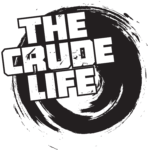

Jon Clark, Clark Energy Consulting gives and update on the Oil Price War and Politics.
Oil futures plummeted over the weekend after Saudi Arabia slashed
prices and ramped up production in response to Russian reluctance to
scale back output. Makes logical sense, right?
“It starts with the virus,” said Yergin, vice chairman of IHS Markit.
“In the first quarter, we estimate that oil demand compared to last
year was down almost 4 million barrels a day.” That’s significant. Add
to that an output hike from Saudi Arabia, US sanctions on Russia’s Nord
Stream 2 gas pipeline to Europe, protecting the “Petrodollar,” and an
election year where geopolitics are extremely heightened, and we have an
all-out price war.
The WallStreet Journal writes “The situation has gone from gloomy to
grim. Oil demand is down. The coronavirus has reduced trade and travel.
Riyadh offered discounts of as much as $13 a barrel. The Saudi’s just
lifted a finger and said “pricing discount.”
Shale Fights For Survival: This Time it’s Different
In 2016, during the previous downturn (also an election year when we
saw a low of $26 per barrel in late February) investors poured billions
into cash-strapped U.S. firms through equity offerings and private
funds. OPEC+ agreed to curtail output to support prices, which also
subsidized higher-cost shale drilling.
“Companies could also continue selling assets to generate cash, but
only if there are interested buyers offering reasonable prices – a big
if.” – WSJ
“Overhead ‘at those companies is eating them alive. Checkerboard
acreage makes them inefficient. No one wants to put up the cash, so the
industry seems to be frozen.’” Said John D. Arnold, a billionaire
investor.
“The latest move are part of a strategic game after U.S. shale
production fundamentally shifted supply, market share and pricing power.
Saudi Arabia pushed prices down late in 2014 to curb U.S. production,
but it didn’t work: Producers cut costs and lenders and investors
stepped in to keep the shale party going. Russia has had enough. It
seems to be betting that the price war will permanently impair U.S.
production and market share. Now Saudi Arabia wants Moscow to reconsider
production cuts, but there is no evidence yet that playing hardball
with Russia will work.”
“Bankruptcies will be more substantial and have a bigger impact on
supply than they did back then,” said Shawn Reynolds, a portfolio
manager at asset firm VanEck. “There’s only a dozen or two [shale]
companies that can survive at $40.”
“Probably 50% of the public E&Ps will go bankrupt over the next
two years,” said Pioneer Natural Resources CEO Scott Sheffield.
But ultimately, Yergin said, “I don’t think this can last very long
because it’s going to hit everybody’s finances including that of the
countries,” referring in particular to Saudi Arabia and Russia.
The silver lining is that “$35 oil reduces the economic case for cutting fossil fuels. Green-energy plans might be shelved.
Energy Stocks Dive to a 15-Year Low on Monday:
Apache (-54%)
Oxy (-52%)
Marathon (-49%)
Diamondback (-48%)
Whiting (-40%)
Parsley (-39%)
Pioneer (-39%)
Noble (-30%)
BP (-19%)
Total (-18%)
Shell (-17%)
Chevron (-15%)
Exxon (-12%)
Jon Clark, Clark Energy Consulting
The Crude Life Podcast can be heard every Monday through Thursday with a Week in Review on Friday.
Spread the word. Support the industry. Share the energy.


